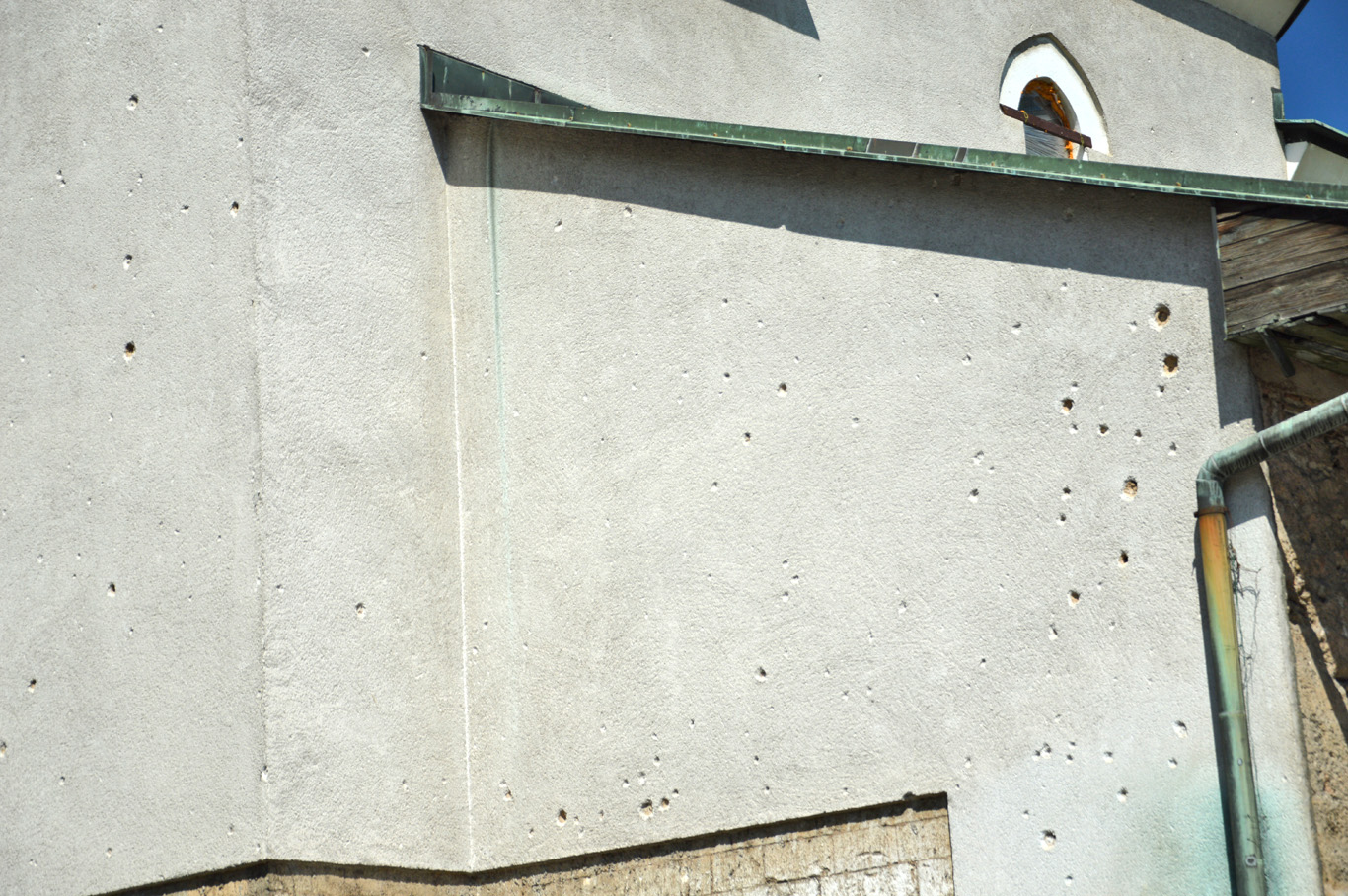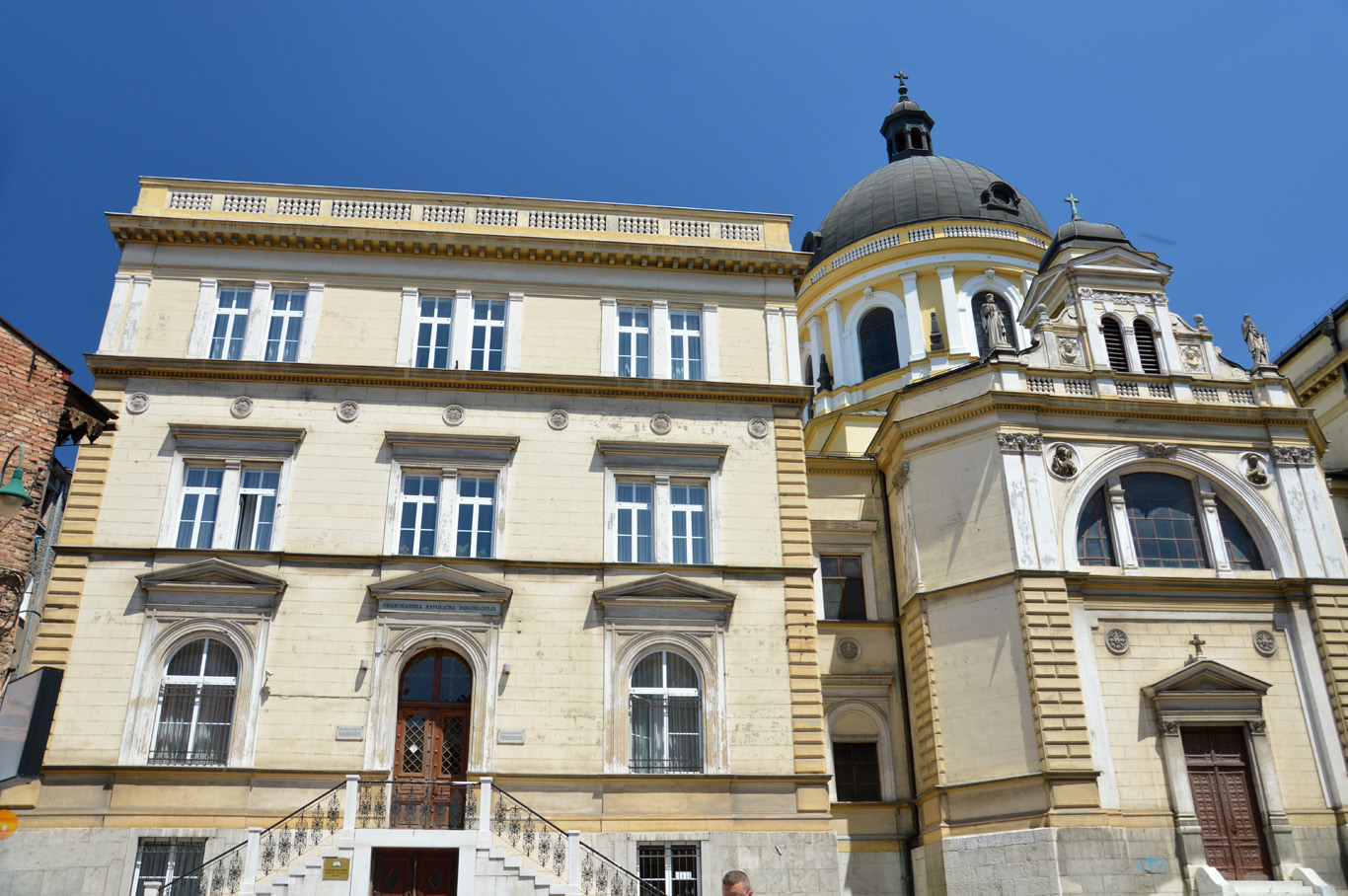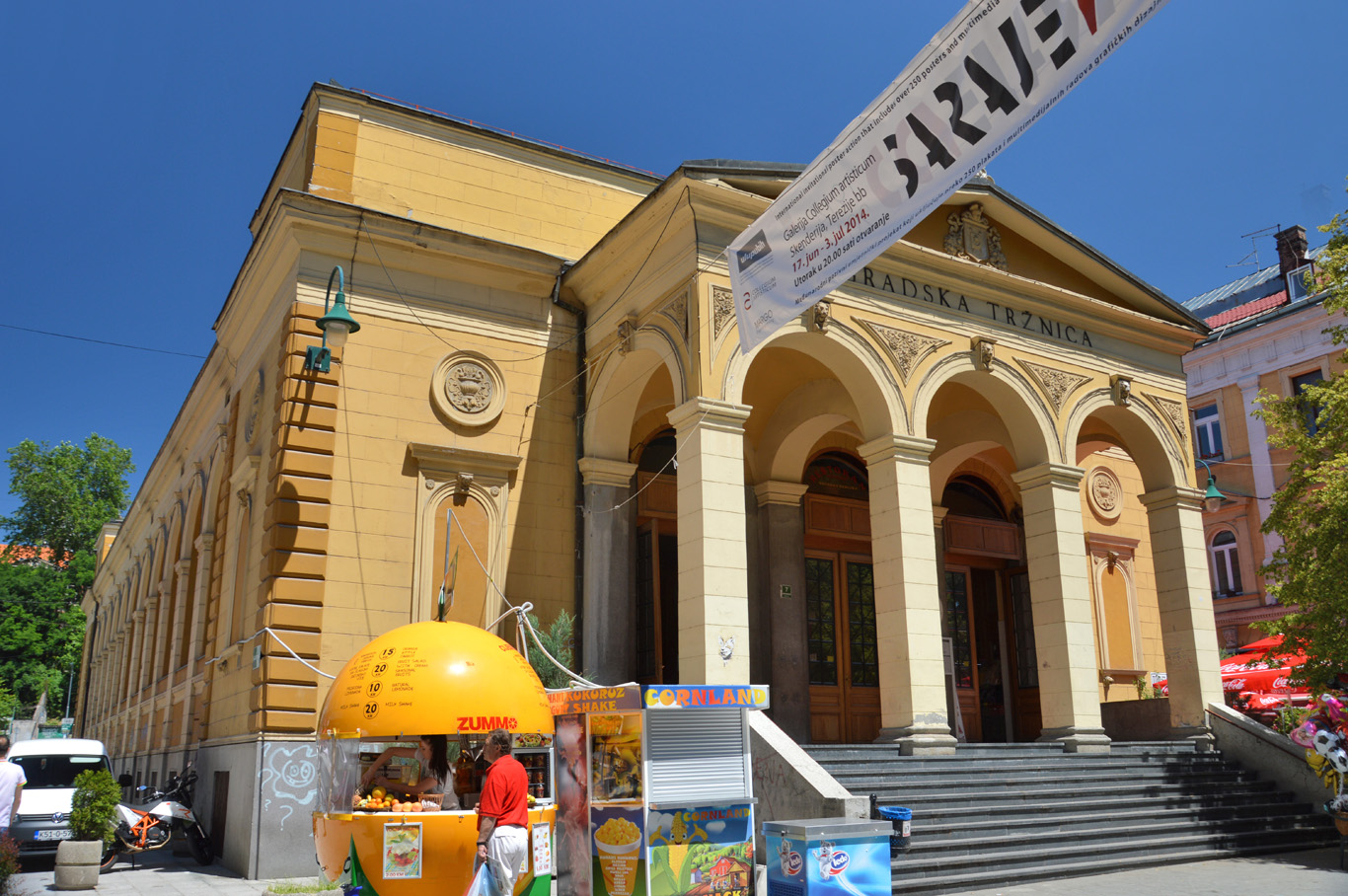Sarajevo, the capital of Bosnia and Herzegovina, is probably one of the least known and visited European capitals. It's not big, populated by less than half a million people. However, the history of Sarajevo is so rich, complex and turbulent that even if the city had given half of its past away to some of the world's greatest metropolises, it would still be enormously interesting for a foreign visitor. Strolling down the streets of the old town, you'll get the impression that it was glued together from pieces that came from all parts of Europe and the Middle East: at one corner, you'll think you're in Prague admiring Christian churches and a street later when you notice oriental stalls, bazaars and Ottoman Mosques, you'll feel as if you were transported to Istanbul.
Boasting of cosmopolitan cities and beautiful quaint villages, tourism in Bosnia has been increasing manifolds over the last two decades. While popular tourist destinations like Sarajevo, Banja Luka, and Mostar brag of unlimited shopping, food and nightlife options throughout the year, the demand for Bosnia and Herzegovina tour packages is also on an all-time high thanks to its luxury ski resorts, beautiful national parks, and lush, dense forests. A holiday in Bosnia will ensure you have great memories for a lifetime.
How to get to Sarajevo
Sarajevo Airport is connected with some European cities, however, I would say it's much easier (and cheaper) to travel to Sarajevo when you travel to other, better known destinations in the region. For example, if you visit Dubrovnik in Croatia, Mostar in Bosnia or Montenegro (I will describe all of them in the future), it's not difficult to catch a bus and spend a few days in Sarajevo. As the city is quite small, even one or two days is enough to see most of the most important landmarks and attractions. The price for a bus from the above mentioned places is around 20-25 EUR (22-27 USD) one way. The bus station in Sarajevo is quite far from the historical center, you'll have to catch a trolleybus, the fare is very low.
Turbulent history of Sarajevo - the city caught in between the clash of the greatest civilizations
The name - Sarajevo derives from the Turkish word "saray" meaning "a palace". The city was founded in the fourteenth century by the Ottoman Empire. It lies right in the center of the most important historical events that have been taking place for more than a millennium. It was here where the Roman Empire separated into two parts - Western Roman Empire and Byzantine Empire. People of all faiths - Catholic, Orthodox, Muslim and Jews had coexisted here peacefully for centuries. Sarajevo was even called "European Jerusalem" due to this phenomenon.
In the nineteenth century Sarajevo was annexed by the Austria-Hungary Empire and during those times European architecture and style was introduced. It was also the time of great development in the city: Europe's first electric tram network was launched here (second in the world, after San Francisco). Unfortunately, not a long time after, Sarajevo went down in history as the place where First World War began as a result of the assassination of Franz Ferdinand of Austria on the Latin Bridge. The response was horrible - riots against Serbs broke out and many people lost their lives.
After the Second World War Sarajevo became a part of Yugoslavia. Under the new, communist rules, the city enjoyed a moment of glory once more for a short time as the host of 1984 Winter Olympics. What followed a few years later was sheer tragedy. During the siege of Sarajevo (the longest siege of a capital in recent history), after Bosnia had declared independence in the 1990s, hundreds of civilians were killed by the Serb army and the city was literally turned into dust.
Nowadays, Sarajevo has been completely rebuilt, however the bullet marks visible everywhere on residential buildings (especially in suburban areas) remain as silent witnesses to the atrocities that human race is capable of.
Bascarsija - Gazi Huserv-beg Mosque in the background
Early Sunday morning - bazaar still very quiet
Bascarsija Bazaar
Sebijl - The Ottoman style fountain at the 'pigeon' square
Ordinary houses along the Miljacka River
National Library (former City Hall)
Sarajevo - view from Yellow Fortress
The cemetery seen from Yellow Fortress hill
A building that suffered during the recent war
Ottoman part of the old town
Mixed architecture
European part of the old town
Bascarsija bazaar
Cemetery - Monument commemorating those who perished during the Bosnian War in 1990s
What to see in Sarajevo
Yellow Fortress Hill and south side of Miljacka River
A watch on the wall of one of the buildings
As I've mentioned before, Sarajevo is small and even if you have only one or two days, you will be able to see most of the attractions just by walking (but you will walk quite a lot!).
It's good to start (or end) visiting Sarajevo on the Yellow Fortress hill. Not much of the fortress is left, however the views are amazing - I climbed the hill early in the morning and was astounded by the view of the city and Memorial Cemeteries resembling a forest of white pillars and commemorating all those who lost their lives during the recent Bosnian War. I had only 1 day in Sarajevo so I didn't see the sunset from there but I wish I could. The hill is located near the main square - Bascarsija - just cross the Miljacka river near the characteristic, triangular building of National Library (former City Hall). It takes around 20 minutes to hike the hill and it's very easy.
On the way back, you can see the attractions on the southern side of the river: the oldest mosque in Sarajevo built in the 15th century - Careva Dzamija (Emperor's Mosque), beautiful, originally deep red in color 19th century buildings of Sarajevska Pivara (Sarajevo Brewery) and Franciscan Monastery. Then, cross the river via the famous Latin Bridge (where the assassination of Franz Ferdinand took place triggering the First World War) into the old town. If you wish to see the sunset from the hill, plan the visit the other way around - start in the modern part of Sarajevo, through the old town and end it on the hill.
sarajevo Old Town
Within the area of the charming old town, visit the old bazaar (15th century) Bascarsija which has an oriental touch with all the beautiful wooden stalls. Nearby, at the square (often called "pigeon square") you'll find an elegant, Ottoman-style fountain Sebilj. Don't miss theGazi Huserv-beg Mosque dating back to the 16th century.
Now go north. Visit Old Orthodox Church (16th century) and a beautiful example of Ottoman, oriental architecture Svrzo's House which is a part of the Museum of Sarajevo Open Monday - Saturday from 10 am to 4 pm (Saturday 3 pm). Entry fee less than 2 EUR. Go back towards the main roads of the old town, visiting Church of St. Cyril and Methodius on the way. Go further south and see the 18th century Sacred Heart Cathedral (the largest in Bosnia and Herzegovina) and Serbian Orthodox Cathedral.
That's a mix isn't it? Virtually nowhere else in the world you can come across so many cathedrals, orthodox churches, mosques and even synagogues, all of them right in the same, main area of the city. Before leaving the old town, at the junction of Ferhadija and Marsala Tita streets, spend a few moments at the Eternal Flame Monument commemorating the victims of the war.
Modern Sarajevo
Avaz Twisted Tower
Keep walking east Marsala Tita street and you will enter the modern part of the city. At the Veliki Park (Great Park), there is another beautiful monument for those who perished during the war. On the other side of the road you will see Ali Pasina Mosque.
Keep going straight Kranjceviceva street - now you are in the Marijin Dvor business district. Most of the area suffered enormous damage during the Bosnian war (note it was only 20 years ago!) - including the twin towers. Now, everything is rebuilt and restored.
Last stop of the Sarajevo tour is the impressive Avaz Twisted Tower (20 min walk from the Eternal Flame). It's the headquarter of Dnevni Avaz, Bosnia's main newspaper company. The Avaz Tower is the tallest building in the country. On the top floor, there is a terrace available to public for a fee under 2 EUR. It's yet another beautiful viewpoint besides the Yellow Fortress Hill.
Right next to the tower is the railway station with trains to Mostar and other cities. You will also find a tram station nearby if you wish to return to the city center by public transport.
Sarajevska Pivara - The Brewery
Franciscan Monastery
Careva Dzamija - Emperor's Mosque
Bullet marks on the walls of the mosque
Buildings along the Miljacka River
Oriental touch in one of the parks
Latin Bridge where Franz Ferdinand was assassinated
Perfect example of Ottoman architecture - Svrzo's House
Church of Saint Cyril and Methodius
Sacred Heart Cathedral
Serbian Orthodox Cathedral
European style square
City market
Elderly men playing chess in the street
Eternal Flame Memorial
Communist architecture
Monument commemorating war victims in Veliki Park
Ali Pasina Mosque
Modern area of Sarajevo
Sarajevo business district - twin towers on the left - view from the Avaz Tower
Modern Sarajevo
Modern Sarajevo
Red roofs and green hills of Sarajevo
Outside Sarajevo
If you are interested in the recent Bosnian war, there are a lot of tours you can join in the tourist center in the old town - Bascarsija. You will travel around the city and witness the most important sites where the war took its toll.
Another interesting destination may be the controversial Bosnian Pyramids. They are basically hills (40 km/25 miles) in the shape of pyramids claimed by local archaeologists to have been created by an advanced civilization much earlier than Egyptian Pyramids (12 000 BC). Daily tours from Sarajevo are possible but a bit pricey.
The most famous town in Bosnia is of course beautiful Mostar (don't miss Blagaj nearby!). It's one of my favorite, little cozy towns with absolutely breathtaking architecture (the famous bridge) and unreal, green river flowing through the center. It's definitely a must when visiting the Balkans! It's located 125 km (77 miles) south of Sarajevo. Buses run almost every hour and the journey takes around 2,5 hours. The price is around 20 KM (10 EUR/11 USD). Another, more scenic but slower option is the train - it takes around 3,5 hours and is slightly cheaper. I've described Mostar here.
If you liked this article, you can also download it via the GPSmyCity app - you will be able to gain access to the guide, which will direct you to all the attractions described above, even if you're offline. Download it here.
Related Posts
Copying without permission is not allowed. If you wish to use any of the site's content (photos or text) or work with us, please contact us.
We welcome questions, advice, support or criticism. However, spam comments will be removed.














































